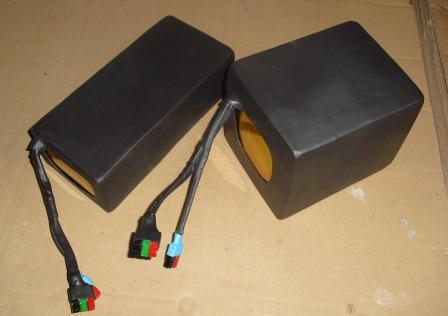SamSpeed
1 W
Here is a candidate for yet another rule -- Don't drop it.
My experience had to do with dumping a new Ping battery on the ground at 20mph. It was held onto the rack with a loose bungee chord. It survived, sortof. I got home, but all eight corners got rounded off when it hit the pavement and tumbled. All the cells in the corners were shot. Many others were quite a bit weaker. Worked with Ping and got replacement cells to replace the worst damaged ones. But think nearly all cells had some degree of damage. Year and a half later, it's still on the road but only getting 8ah out of a 20ah rated battery pack. Forget about balancing! Moral of the story? Don't do what I did.
Maybe the rule should read (choose your favourite)...
* Don't drop it.
* Encase and attach your battery firmly to the frame.
* Don't use bungee chords to hold down your battery.
My experience had to do with dumping a new Ping battery on the ground at 20mph. It was held onto the rack with a loose bungee chord. It survived, sortof. I got home, but all eight corners got rounded off when it hit the pavement and tumbled. All the cells in the corners were shot. Many others were quite a bit weaker. Worked with Ping and got replacement cells to replace the worst damaged ones. But think nearly all cells had some degree of damage. Year and a half later, it's still on the road but only getting 8ah out of a 20ah rated battery pack. Forget about balancing! Moral of the story? Don't do what I did.
Maybe the rule should read (choose your favourite)...
* Don't drop it.
* Encase and attach your battery firmly to the frame.
* Don't use bungee chords to hold down your battery.


